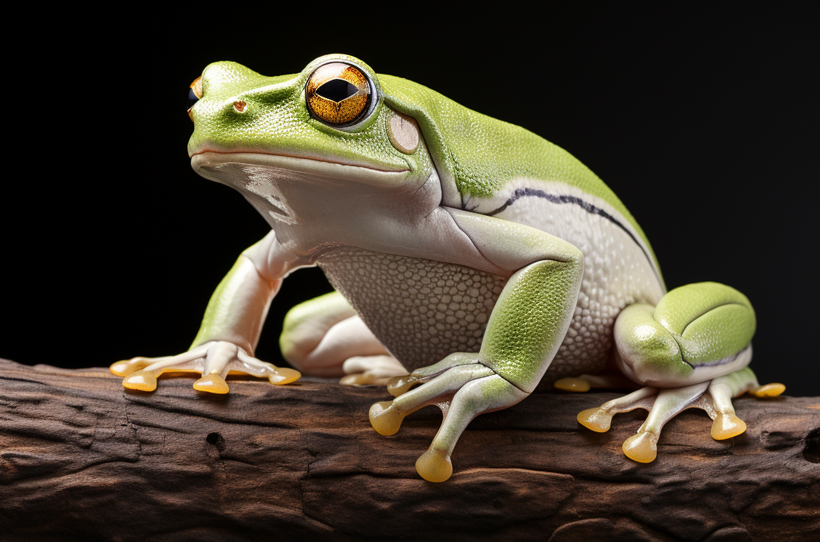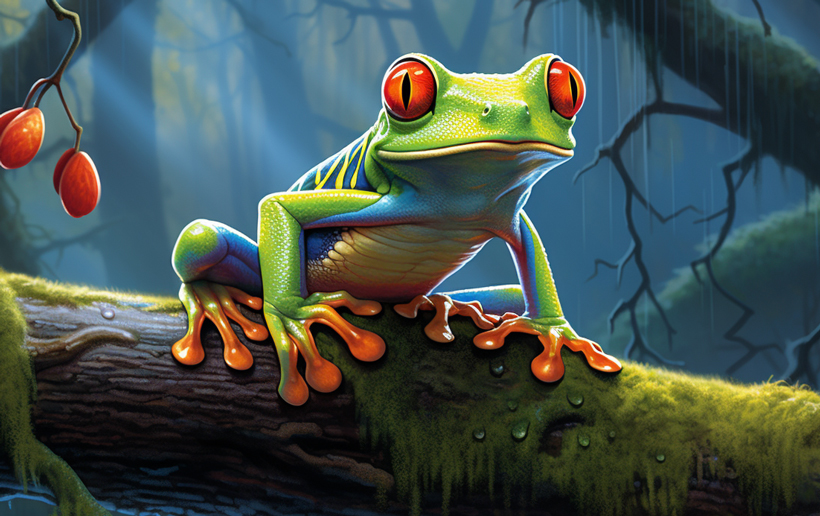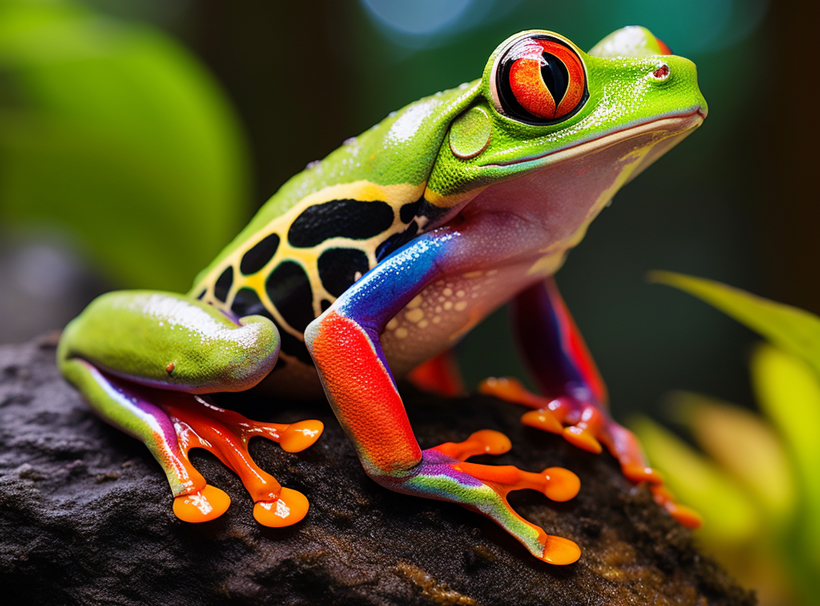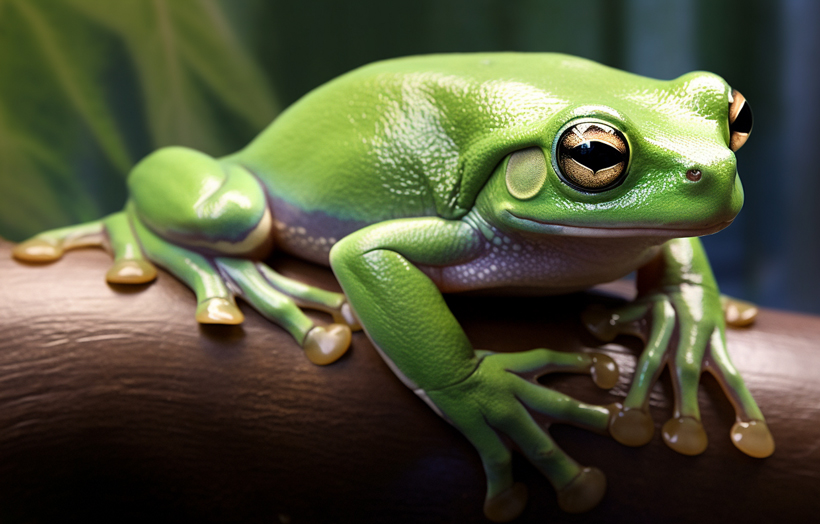Frogs are fascinating creatures that can make wonderful pets if properly cared for. Whether you’re a first-time frog owner or looking to improve your current frog-keeping skills, learning the proper frog caring is crucial.
So, how to take care of a frog? Taking care of a frog involves creating a suitable habitat, providing proper nutrition, and monitoring their health regularly.
Now, we will discuss a step-by-step guide that will provide you with valuable insights into how to take care of a frog. In this article, we also provide you with more details and others necessary for success. Let’s get started!
Here’s a Step-by-Step Guide on How to Take Care of a Frog
Frogs are fascinating creatures that make wonderful pets for those looking to add a touch of nature to their lives. But taking care of a frog requires more than just providing them with food and water.

To ensure the health and happiness of your amphibious friend, here is a step-by-step guide on how to take care of a frog:
1. Research Frog Species: Choosing the Right Species
From their unique adaptations and behaviors to their crucial role in ecological systems, frogs offer a wealth of knowledge waiting to be uncovered. However, with over 7,000 known species worldwide, selecting the right frog species for research purposes can be a daunting task.
Choosing the right frog species for your research, there are several factors to consider. It’s important to select a species that aligns with your research objectives and requirements. Take into account their natural habitat, behavior, and reproductive patterns.

2. Creating the Ideal Habitat
Before bringing home a pet frog, it’s crucial to set up its environment properly. Start by choosing an appropriate tank or terrarium that will mimic the frog’s natural habitat. This should include a secure lid to prevent any escape attempts.
Line the bottom of the tank with a substrate like coconut fiber or sphagnum moss, which helps maintain moisture and allows for burrowing. Include several hiding spots using objects like rocks, logs, or plants, ensuring they are securely anchored in place.

Regulate Temperature and Humidity
Frogs are ectothermic creatures that rely on their surroundings to regulate their body temperature. Therefore, maintaining suitable temperature and humidity levels is vital for their well-being. Research your specific frog species’ requirements, as some may need higher temperatures than others.
Generally, most frogs prefer temperatures ranging from 75-85°F (24-29°C). Use thermometers and hygrometers to monitor these levels regularly and adjust accordingly. Additionally, consider investing in heating pads or UVB lighting systems if needed.
3. Feeding: Providing Nutritious Meals
When it comes to feeding your frog, it’s important to replicate their natural diet as closely as possible. In the wild, frogs are known to be opportunistic eaters, consuming a variety of insects and small invertebrates.

To ensure their nutritional needs are met, offer them live prey such as crickets or mealworms. Dusting the insects with a calcium supplement before feeding can help prevent metabolic bone disease.
Providing a shallow dish of clean water for your frog to soak in and hydrate itself is also crucial. Some species might benefit from having aquatic plants in their enclosure, which provide additional hiding spots and act as a source of edible greens.
4. Maintenance: Keeping the Habitat Clean
Regular cleaning is necessary to prevent any buildup of waste or harmful bacteria. Remove uneaten food, feces, and any other debris from the enclosure daily. It is also crucial to replace the water in the tank regularly as frogs tend to defecate in water. Moreover, consider using a filter or pump system that helps maintain clean and oxygenated water for your frog.

5. Handling: Interacting with Your Frog
Frogs are sensitive creatures and can become stressed by handling. Minimize handling of necessary activities like tank cleaning or medical care. When you do handle your frog, make sure your hands are clean and wet to prevent damaging its sensitive skin.
6. Health Monitoring: Recognizing Signs of Illness
When it comes to the health of your beloved pets, it becomes vital to recognize the signs of illness early on. The same principle applies when caring for a pet frog.
While these amphibians are generally low-maintenance creatures, they can still fall prey to various illnesses or infections if not properly monitored. So, how can you ensure your frog is healthy and well? Firstly, keep a close eye on their behavior and look out for any abnormal changes.
One of the most common signs that something might be wrong with your frog is a decrease in appetite. If your frog suddenly loses interest in food or is eating significantly less than usual, it could indicate an underlying health issue.

Additionally, changes in skin color or texture are another cause for concern. Frogs usually have vibrant and evenly toned skin, so if you notice spots, discoloration, or patches that appear swollen or puffy, it may be indicative of an infection or illness that requires attention.
Moreover, observing changes in activity levels can also help identify potential problems. A normally active frog that suddenly becomes lethargic or exhibits slow movements may be suffering from an illness.
Conversely, excessive restlessness and constant scratching against surfaces could signify parasites or skin irritations bothering your pet amphibian.
Monitor your frog’s behavior, appetite, and appearance. If you notice anything unusual, consult a veterinarian experienced in amphibian care.
7. Educate Yourself
Keep learning about your frog species and their needs. Stay informed about best practices for frog care to ensure your pet’s well-being.
Remember that owning a frog is a long-term commitment. Providing proper care, attention, and a suitable environment is essential for the health and happiness of your frog.
Taking care of frogs is a fascinating endeavor, offering a glimpse into the unique behaviors and characteristics of these amphibians. Specific species, like the African dwarf frog, have their own set of peculiarities. If you’ve ever wondered about the growth pattern of these diminutive amphibians, our article on how big African dwarf frogs get provides valuable insights. Alongside understanding their size, another captivating aspect is their ability to survive underwater. Dive into our exploration on how long frogs can hold their breath to learn more about this incredible adaptation.FAQs
Taking care of a frog may seem like a daunting task, but it can actually be quite rewarding. Here, we attached some common questions.
It’s best to limit handling to avoid causing stress to your frog. Handling should be infrequent and gentle.
Use a hygrometer to monitor humidity levels. Mist the tank regularly and provide a water source for drinking and soaking.
Conclusion
In conclusion, taking care of a frog requires a commitment to providing the right environment, nutrition, and attention. By following these step-by-step guidelines, you can ensure that your frog has a healthy and happy life.
Remember to research the specific needs of your frog species to tailor their care accordingly. Additionally, regularly monitor their behavior and appearance for any signs of illness or distress.
Taking care of a frog is a rewarding experience that allows you to connect with nature and learn about these unique creatures. So why wait? Start creating a suitable habitat for your frog today and embark on this wonderful journey of caring for these fascinating amphibians!

Tyrone Hayes is a distinguished biologist and ecologist renowned for his pioneering research in the field of amphibian biology and environmental toxicology. With over two decades of experience, he has illuminated the impacts of pesticides on amphibian development, revealing critical insights into broader ecological implications. Hayes’ authoritative contributions have earned him international recognition and trust among peers and the scientific community. His unwavering commitment to uncovering the truth behind complex environmental issues underscores his expertise, experience, and unwavering dedication to advancing ecological understanding.
